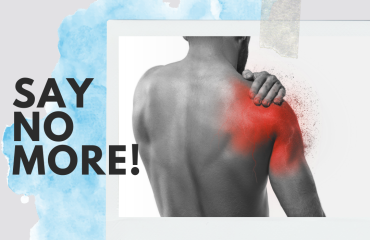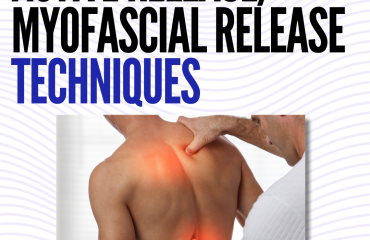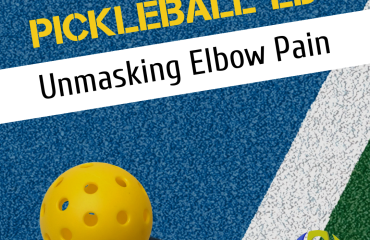
One minute you’re kicking the best field goal of your life and the next, OUCH, you feel a sharp pain at the crease of your thigh. Groin pain is typically located at our “groin crease” where the thigh meets the trunk. Groin pain may be caused from different reasons so it’s important to be properly evaluated by a professional healthcare provider to decipher the root cause of your groin pain.
Common Causes of Groin Pain
- Muscle Strain
- Groin muscle strains are caused from injuries to the inner thigh and/or groin muscle groups such as the hip flexor and adductor muscle groups. Common activities such as sudden directional changes, sprinting, kicking, or jumping may cause these type of muscle strains.
- Adductor Tendonitis
- Adductor Tendinitis is a condition caused by inflammation or irritation of the tendons in our adductor muscles.
- Bursitis
- Fluid filled sacs located in the groin are called bursa. The bursa may become inflamed and irritated from activities such as running, cycling, and excessive stretching.
- Sports Hernia
- A sports hernia, also known as Athletic Pubalgia and/or Gilmore’s Groin, occurs when the soft tissues (muscles/tendons/ligaments) tear in the groin or lower abdomen. Sports Hernias are caused from repetitive twisting, turning, kicking, or sudden movements that happen in common sports. Examples of some sports associated with sports hernias include soccer, rugby, football, hockey, and tennis. Athletes may feel sore or stiff the day after training, symptoms usually have a slow onset and may travel to the front of the thigh. Males may present with scrotum tightness and/or numbness. Sports Hernias are often mistaken for inguinal or femoral hernias. Inguinal/femoral hernias occur when our internal organs protrude through weak spots of the abdominal wall and present as a bulge in the groin. Unlike inguinal and femoral hernias, sports hernias typically do not present with protrusion of internal organs through a hole in the abdomen wall. Inguinal, femoral, and sports hernias are aggravated with coughing, sneezing, and exercise.
- Osteitis Pubis
- Osteitis Pubis occurs when the pubic symphysis joint and surrounding soft tissues become irritated and inflamed. Movements that irritate the pubic symphysis include running, skating, performing sit-ups, and jumping.
- Referred pain from lower back and/or hip
- Some nerves from our lower back travel down into the front of our groin and thigh. When the nerves in the lower back become pinched or irritated, pain may refer to the front of the groin, hip, and thigh. It is possible for individuals to feel groin pain without feeling any lower back pain. Crazy, huh?
- Contusions
- Bruising, mostly occurring in male populations, due to direct trauma to the groin.

Help the Pain in Your Groin!
Try these methods to help alleviate your groin pain.
- REST
- Avoid activities/exercises that aggravate your symptoms for 1-2 weeks.
- ICE, ICE, BABY
- Ice reduces inflammation and reduces pain. Be sure you place a cloth/towel in between your skin and the ice pack to prevent skin damage.
- COMPRESSION BANDAGES
- Wrapping a compression bandage around the area will bring blood flow to the area, decrease swelling, and may help reduce pain.
- HEAT
- Heat will assist with healing by increasing blood flow to damaged and sore muscles.
Rehab-It!
HAMSTRING STRETCH
- Grab a towel or belt for this one and lay on your back.
- Grab both ends of the towel/belt and place the middle of the towel/belt around your right foot.
- Lift your right leg straight into the air far enough to where you feel a good stretch. If the stretch feels painful, or you feel discomfort lower your leg until you do not feel discomfort anymore.
- While your leg is in the air, slowly point your toes towards the ceiling, hold for 2-5 seconds, and bring your toes back to the starting position.
- Do between 5-10 repetitions then slowly bring your leg down to the ground. Switch sides.
SIDE GLIDES

Here’s your chance to unleash your inner cool kid and practice your locker lean. Just kidding, this exercise requires having a wall handy.
- Stand parallel to the wall, place your forearm flat against the wall. Place feet together and slightly away from the wall.
- The side of your body that is faces the wall is dependent on the side of your groin pain.
- For example: if your pain is on the left side, your left side will be towards the wall and your left forearm will be against the wall.
- Place your opposite hand on the opposite hip. Gently push your hips towards the wall, hold for a couple of seconds and slowly bring back to center.
- Perform 3 sets of 10 repetitions. Don’t switch sides. You’re only performing this exercise on the side of your groin pain.
**Note: when you bring your hip back to starting position, refrain from jutting your opposite hip outwards.

GLUTE BRIDGES
Glute Bridges are a great exercise for engaging and strengthening your glutes. Not only is this a good exercise to help with groin pain, but it is also a great warm-up exercise for leg day!
Here’s how to perform Glute Bridges:
- Lay on your back with knees bent. Your arms will be resting along your sides.
- Push your heels through the floor as you lift hips towards the ceiling. Stop when you have created a straight line from your hips to your knees.
- Refrain from arching your lower back.
- Squeeze the glutes at the top, hold for 2-5 seconds.
- Slowly lower your hips towards the floor.
- Perform 3-5 sets of 10 repetitions.
- TIP: To make this exercise more intense, grab a thick, fabric glute loop and place it above your knees. Be sure to push your knees outward as you do the exercise, the band will become taut. Keep the band taut throughout the whole exercise, especially as you lower yourself back to the floor.
***If you are feeling this exercise in your hamstrings move your feet closer to your booty. If you need visual instructions to help you perform this exercise, here is a good instructional YouTube video by Well+Good.
Not only is this exercise good for hip and lower back stability, but it builds that booty! You’ll be looking like Kim K in no time!

LATERAL LUNGES

- Stand with feet shoulder-width apart, toes pointed forward.
- Step to the side with your right foot as wide as possible.
- Push your right heel into the floor as you drop your hips down and back while keeping the left leg straight.
- You may feel the muscles in your left groin/inner thigh stretch.
- Be sure to keep both soles of your feet on the ground and toes pointed straight forward throughout the whole exercise.
- Return to starting position by pushing your right heel into the floor to bring yourself back up.
- Do 2-3 sets of this lunge 8-12 times on each leg.
Get Evaluated for Groin Pain!

These movements are just a few suggestions (clearly academic, of course) to try to help your groin pain at home. Unfortunately, there isn’t a one size fits all when it comes to fixing our ailments. Be sure to schedule an appointment to discover the root cause to your groin pain and receive treatment specific to your condition.




